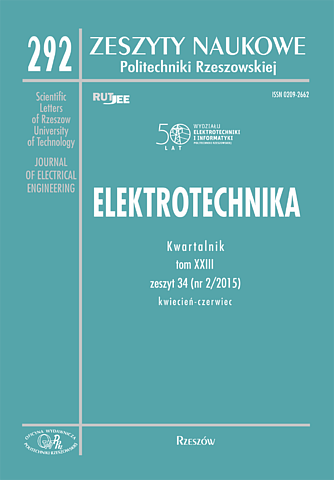Abstract
The paper contains a description of a model of an automaton, that is intended to supporting investment decisions on a capital market. The author accomplished a review of commercial offers, that are designed to take financial decisions. He also proposed an architecture of a system, that on the basis of current quotations of selected financial instruments, decides to change holdings between mutual funds or buy or sell shares of an ETF. The financial instrument can be: indexes of stock exchanges, selected mutual funds, ETFs or bonds of selected issuers. The system consists of two connected automatons. The first of them, modeled by a Petri net, hold information about current state of financial markets. The second one, modeled as a classic Mealy machine, keeps information about state of the holdings and takes the investment decisions. The Petri net changes its marking on the ground of external signals, which are selected signals of the technical analysis. These signals are connected with alterations of trends of financial instruments. The Mealy machine switches its state due to new Petri net marking. The transition between states causes that a decision is generated, what kind of a financial operation should be performed. Besides a formal description of models, the paper contains results of an experiment. The author chose some function of technical analysis, that are used by the system to decide of fall or growth of the bond and stock market. Using historical quotation from the period of 2008 – 2011, parameters of the functions have been calculated so that the system does not gain looses during the test years. Thereafter the author invested money on the real investment account for the period of 8 months, proceeding according to the system indications.
References
[2] Joerg Desel. A proof of the rank theorem for extended free choice nets. In K. Jensen, editor, Application and Theory of Petri Nets 1992, volume 616 of Lecture Notes in Computer Science, pages 134–153. Springer Berlin Heidelberg, 1992.
[3] Curtis Faith. Way of the Turtle: The Secret Methods that Turned Ordinary People into Legendary Traders. McGraw-Hill; 1 edition, 2007.
[4] Robert Fischer. Liczby Fibonacciego na giełdzie. WIG PRESS, 1996.
[5] Biuro Marketingu Grupa PZU. Witryna internetowa TFI PZU S.A. http://www. pzu.pl/grupa-pzu/tfi-pzu, wrzesień 2013.
[6] George H. Mealy. A Method for Synthesizing Sequential Circuits.Bell System Technical Journal, 34:1045–1079, 1955.
[7] Hanna Morawska. Efektywność zabezpieczenia portfela akcji za pomocą kontraktów terminowych futures na wig 20. In W. Tarczyński, editor, Rynek kapitałowy w przededniu integracji Polski z Unią Europejską, All ACM Conferences, pages 167– 179, Szczecin, 2004. Polskie Towarzystwo Ekonomiczne.
[8] John J. Murphy. Analiza techniczna rynków finansowych. WIG Press, 1999.
[9] Steve Nison. Świece i inne japońskie techniki analizowania wykresów. WIG PRESS, 1996.
[10] Ministerstwo Finansów RP. Baza transakcji - bony skarbowe. http://www.finanse.mf.gov.pl/web/wp/dlug-publiczny/bony-i-obligacjehurtowe/baza-transakcji, 9 2013.
[11] Ministerstwo Finansów RP. Serwis internetowy obligacji skarbowych. http://www.obligacjeskarbowe.pl, wrzesień 2013.
[12] P.H. Starke and J. Żurek. Sieci Petri: podstawy, zastosowania, teoria. PWN, 1987.
[13] GPW w Warszawie. Archiwum notowań. http://www.gpwinfostrefa.pl, 9 2013.





